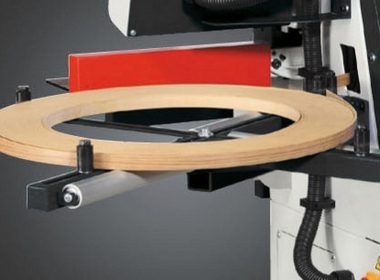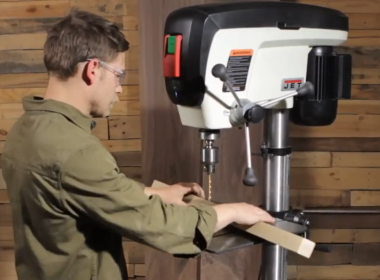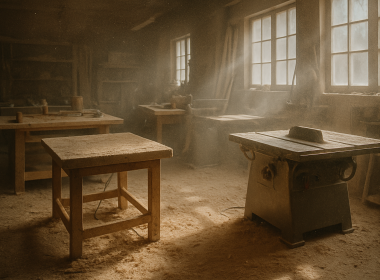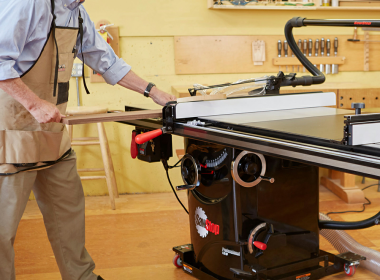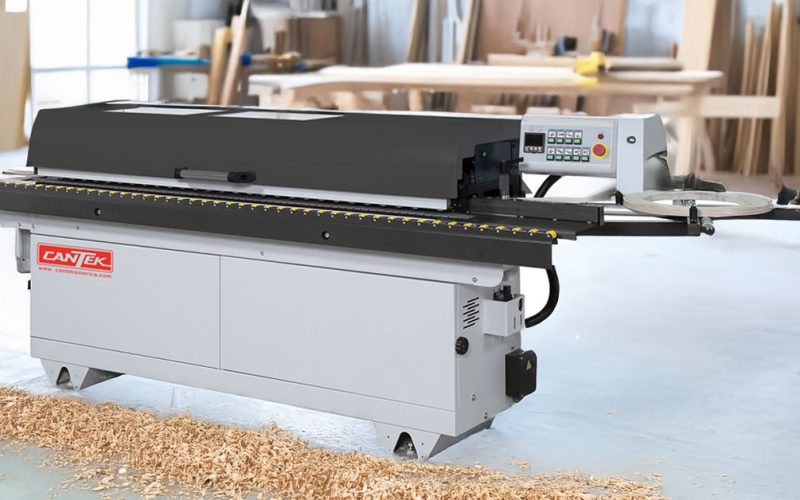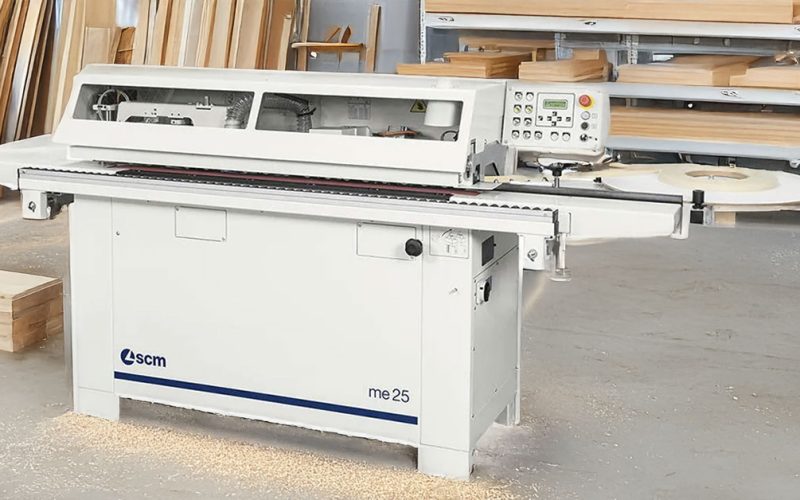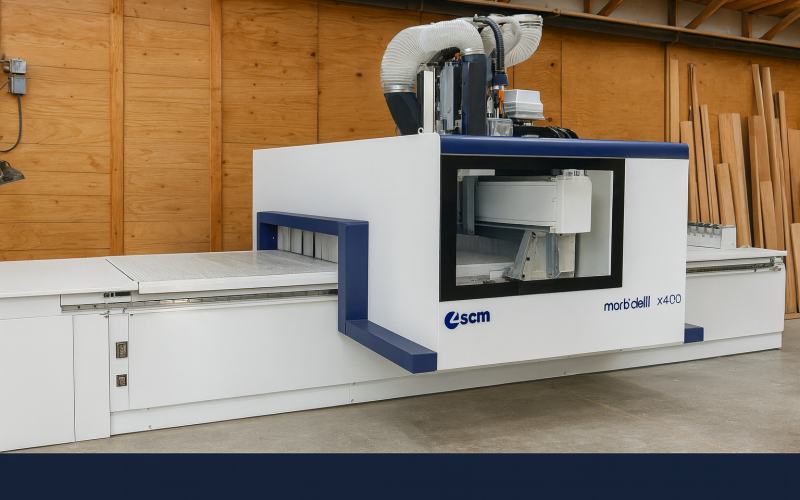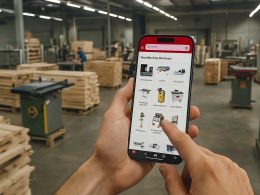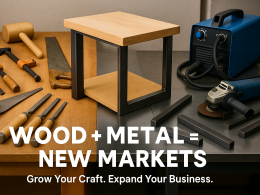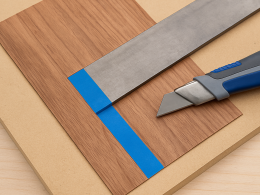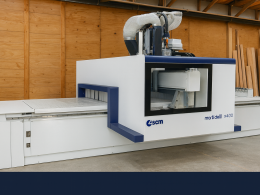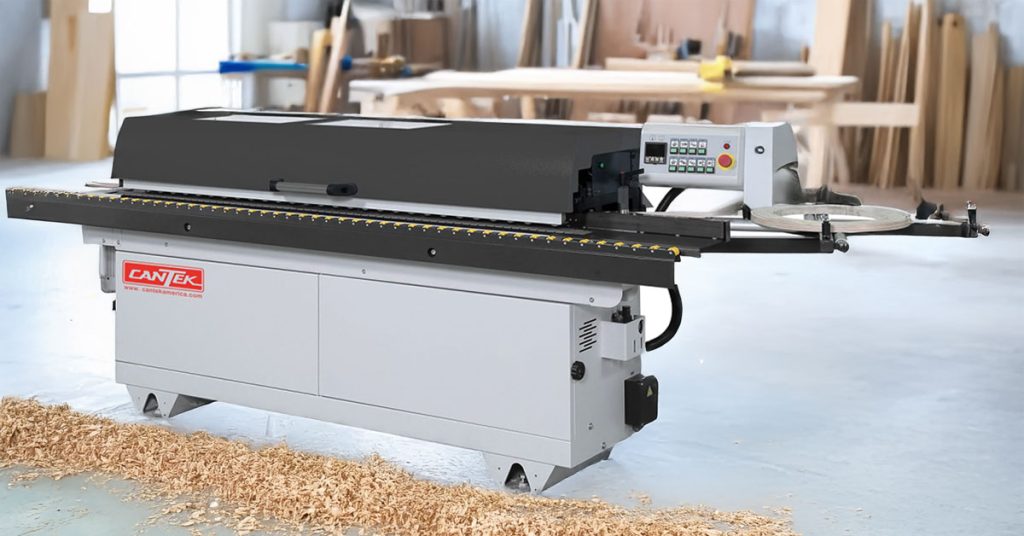
Stop hand-finishing edges. The Cantek MX350M Automatic Edgebander with premilling delivers factory-quality edge finishing in one pass, eliminating the bottleneck between your panel saw and assembly. For cabinet shops and millwork operations producing 10-50 units weekly, this compact machine turns rough-cut panels into finished components without added labor or project delays.
What it solves: Manual edge finishing creates production stalls. Uneven edges waste material. Hand-sanding delays delivery. This edgebander removes those friction points with automated premilling, gluing, trimming, scraping, and buffing in a single 23-foot-per-minute process.
Who benefits: Production shop owners running CNC routers or panel saws, operations managers looking to reduce touch time per panel, and custom cabinet makers transitioning from manual methods to automated workflows.
What This Machine Does for Your Operation
The MX350M transforms cut panels into finished cabinet components through six automated stations. Pre-milling diamond cutterheads machine the panel edge to precise 90-degree angles before glue application critical for seamless edge bonds on laminated panels with saw marks.
Cabinet Production
Process 150-200 cabinet panels in an eight-hour shift with one operator. Apply PVC or melamine edges to door panels, drawer fronts, shelving, and case components. The chain feed system maintains consistent pressure and speed, eliminating the hand-pressure variables that cause uneven glue lines.
Custom Millwork
Edge-band architectural panels, wall units, and built-ins with materials from 0.4mm melamine tape to 3mm PVC coil stock. The heated infeed fence pre-warms panels for optimal glue penetration on dense materials like MDF and hardwood plywood.
Furniture Manufacturing
Apply wood veneer edges up to 2mm thick for tabletops, credenzas, and case goods. Radius trimming and buffing stations deliver furniture-grade finishes without secondary operations. One pass produces results that previously required edging, trimming, scraping, and hand-sanding.
Production Impact
Replace 3-4 manual steps with one automated pass. A typical kitchen project (40 cabinet boxes, 120 linear feet of edging per box) moves from two days of edge work to four hours of machine time. Operator focuses on loading panels while the machine handles application, trimming, and finishing.
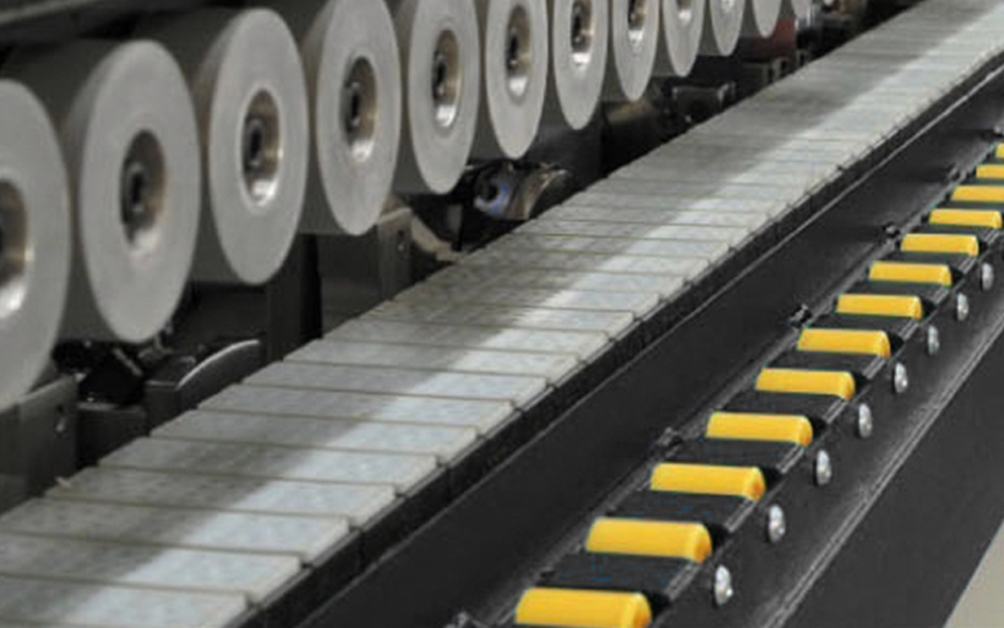
Know Before You Buy: Complete Specifications
Working Capacity
- Feed Speed: 23 feet per minute (7 meters/min)
- Panel Thickness: 0.472″ to 1.77″ (12-45mm)
- Edge Thickness: 0.0158″ to 0.118″ (0.4-3mm coil stock)
- Minimum Panel Width: 3.54″ (90mm)
- Minimum Panel Length: 8.75″ (220mm)
- Working Table Height: 33.7″ (856mm)
Power & Requirements
- Electrical: 230V/1-Phase/60Hz, 35 amp dedicated circuit
- Total Connected Power: 8 HP (6 kW)
- Feed Motor: 1 HP (0.75 kW)
- Pre-milling Motor: 2 HP (1.5 kW)
- Glue Pot Heater: 1.75 HP (1.315 kW)
Physical Footprint
- Machine Dimensions: 126″ L x 47.25″ W x 47.25″ H
- Machine Weight: 1,162 lbs (528 kg)
- Shipping Weight: 1,452 lbs (660 kg)
Dust Collection & Air
- Dust Ports: Three 4″ (100mm) diameter connections
- CFM Requirement: Minimum 1,300 CFM recommended
- Compressed Air: 90-100 PSI, 8.83 CFM
Mini-FAQ: Technical Questions
Q: Can this machine handle solid wood edging strips?
A: Yes. Feed solid wood strips up to 4mm thick by hand. The guillotine shear is designed for coiled materials up to 3mm; thicker strips bypass the auto-feed.
Q: What’s the difference between the 1-phase and 3-phase models?
A: Electrical configuration only. The 1-phase (35 amp) works with standard shop power. The 3-phase (19 amp) is more efficient for shops with three-phase service. Processing capacity is identical.
Q: How do I switch between different edge tape colors or materials?
A: The glue pot has a 1.2 kg capacity and Teflon coating for quick color changes. Most operators swap in 10-15 minutes: drain existing glue, wipe clean, reload. No disassembly required.
Production Impact: What You Can Accomplish
Daily Output Capability
One operator processes 150-200 standard cabinet panels per eight-hour shift at 23 feet per minute feed speed. A typical base cabinet box (four panels, 18 linear feet total edging) takes approximately 12 minutes: four minutes machine time, eight minutes for panel positioning and quality checks.
Production shops running 10-hour shifts with optimized panel flow handle 32 sheets of material (cut, edge-banded, and ready for hardware) with a single operator. The pre-milling function eliminates the saw-mark cleanup that typically adds 30-45 seconds per panel in manual workflows.
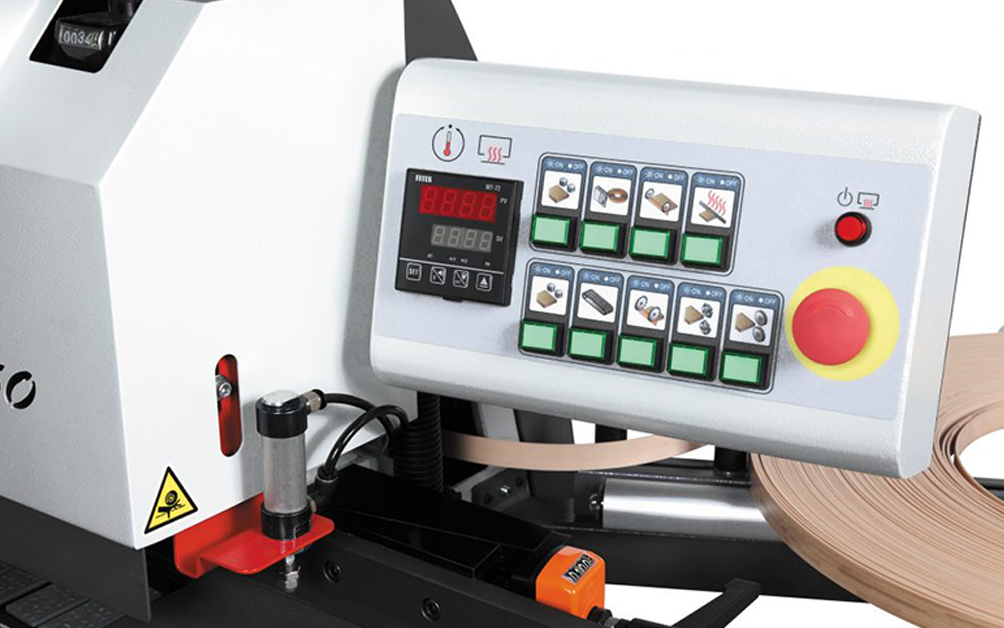
Material Versatility
PVC and ABS Coil Stock: 0.4-3mm thickness, up to 31.5″ diameter coils. The automatic edge feeder and guillotine shear handle material changeovers without adjustment for thickness variations within range.
Melamine and Paper-Backed Tape: Pre-heating fence activates glue faster on porous materials. Ideal for high-volume cabinet production where speed and cost efficiency matter more than invisible glue lines.
Wood Veneer: Up to 2mm coiled veneer for furniture-grade applications. The copy-tracing wheels on flush trimmers follow panel contours without scratching face veneers—critical for premium hardwood plywood.
Quality & Precision
Pre-milling units cut 0.5-1mm from the panel edge before glue application, ensuring perfectly square contact surfaces. This micro-adjustment eliminates the edge gaps that appear when banding saw-cut panels directly. The result: glue lines under 0.2mm on light-colored materials.
Trimmers use insert knife cutters rotating at 10,500 RPM for radius and bevel cuts. Replaceable inserts mean 15-minute blade changes versus hour-long cutter head rebuilds. Shops process 500-1,000 panels between blade changes depending on material density.
Operational Efficiency
Chain feed eliminates the panel-skewing common with friction rollers. Workpieces travel through all stations at consistent speed and pressure, reducing operator re-work from 15-20% of panels (manual methods) to under 3%.
The pressure beam’s extendable support arms stabilize panels through trimming and buffing stations. Large door panels (24″ x 96″) stay flat and square without operator assistance, allowing one person to run continuous production.
ROI Context
Cabinet shops report payback periods of 18-36 months when replacing manual edge finishing methods. Time savings: approximately 8-10 minutes per cabinet box (four panels). Material waste reduction: 5-8% from improved glue application and precision trimming. Labor reallocation: operators move from finishing work to higher-value assembly and installation tasks.
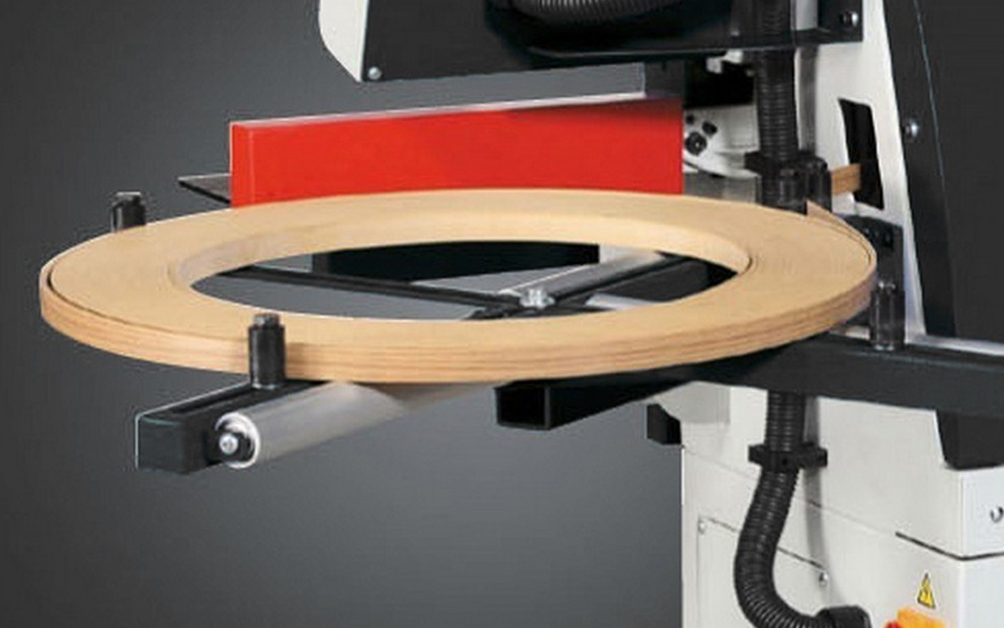
What You Need to Know Before Delivery
Space Requirements
- Machine Footprint: 126″ x 47.25″ (10.5′ x 4′)
- Infeed Clearance: Minimum 96″ (8′) for full-sheet panel handling
- Outfeed Clearance: Minimum 96″ (8′) for processed panel removal
- Side Access: 36″ on operator side for maintenance and adjustment
- Total Floor Space: 15′ x 8′ minimum (120 sq ft)
Do not position against walls. The MX350M requires clearance on both ends to process standard 96″ panels. Side access is necessary for daily cleaning and glue pot service.
Electrical Requirements
- Service: 230V single-phase, 60Hz
- Circuit: Dedicated 40-amp breaker (35-amp machine draw)
- Wire Gauge: 8 AWG copper minimum for runs up to 50 feet
- Connection: Machine terminates in electrical cabinet under right side panel
- Ground: NFPA-compliant equipment grounding required
Schedule electrical installation before delivery. Most shops install a dedicated subpanel near the machine location to avoid voltage drop issues. Wire runs over 75 feet may require 6 AWG conductor.
Dust Collection
- Ports: Three 4-inch diameter outlets (end trim, flush trim, pre-mill)
- CFM Requirement: 1,300 CFM minimum at each active port
- Total System: 2,000+ CFM for optimal performance during heavy
- Static Pressure: System must maintain 8″ water column at machine
- Hose Diameter: 6″ main trunk recommended for multiple connections
Undersized dust collection causes chip buildup on tracing wheels and trimming units, degrading edge quality. Budget for a dedicated 3HP+ collector if connecting multiple machines.
Compressed Air
- Pressure: 90-100 PSI continuous
- Volume: 8.83 CFM sustained during operation
- Connection: 1/2″ NPT inlet at machine rear (triple filter/regulator/lubricator)
- Compressor Size: 5 HP minimum for single machine
- Tank Capacity: 60-gallon minimum to prevent short-cycling
The pneumatic system operates pressure rollers, trim positioning, and glue pot mechanisms. Pressure drops below 85 PSI trigger safety interlocks that stop the feed system.
Foundation & Leveling
- Floor: Level concrete slab, maximum 1/8″ variance per 10 feet
- Mounting: Four adjustable leveling feet (included) plus optional anchor bolts
- Vibration Isolation: Rubber pads recommended for second-floor installations
- Load Capacity: Minimum 150 PSF floor rating for machine plus material staging
Machine must be level within 0.005″ across the work surface. Out-of-level conditions cause panels to drift during feed, creating uneven edge application.
Mini-FAQ: Operation Questions
Q: How long does it take to change from PVC to wood veneer?
A: 15-20 minutes for complete changeover: adjust edge feeder height, reset trim blade depth, modify glue temperature (wood veneer requires 20-30°F lower temp), and run 2-3 test panels.
Q: Can one person run this machine continuously?
A: Yes, with proper material staging. Set up cut panels on a cart or table within arm’s reach. The 23 FPM feed speed gives you approximately 25 seconds between 8-foot panels enough time to position the next piece.
Q: What happens if a panel jams?
A: Hit the emergency stop immediately. The machine has safety interlocks that prevent motor damage. Open the sound enclosure, remove the jammed panel, check for debris or misalignment, and restart. Most jams occur from incorrect thickness settings or debris on the feed chain.
Q: How often should I completely drain and clean the glue pot?
A: Every 2-3 weeks for single-shift operation, weekly for double-shift production. More frequent cleaning prevents carbonized buildup that affects glue flow and temperature consistency.
Q: Can I use automotive or general-purpose grease for lubrication?
A: No. Use high-temperature bearing grease rated for 400°F+ on glue pot mechanisms. Standard grease breaks down from heat and contaminates the glue.
Q: What causes rough edges after trimming dull blades or speed settings?
A: Typically dull blades. Trimmer inserts should produce glass-smooth edges on PVC and ABS. If edges feel rough or show chatter marks, replace inserts immediately. Speed settings rarely cause edge quality issues.
More Than Machinery We Keep Your Operation Moving
What Sets Wurth Louis and Company Apart
Operational Transparency
We tell you what you need, what’s optional, and what can wait. No upselling features that don’t match your production volume. If a less expensive machine fits your workflow, we’ll say so. If you need more capacity, we’ll explain exactly why.
Clear lead times, accurate delivery windows, and honest assessment of installation complexity. When we quote 2-3 weeks for delivery, it means 2-3 weeks—not “6-8 weeks, maybe”.
Expert Support That Removes Friction
Factory-trained technicians who understand woodworking workflows, not just machine mechanics. We’ve installed hundreds of edgebanders in shops from Seattle to San Diego and know the site preparation mistakes that delay startups.
Phone support answers specific questions: “What’s the correct glue temperature for 1mm oak veneer on MDF?” not generic troubleshooting scripts. Email support@wurthlac.com with photos and get detailed responses within 4 business hours.
The Result
You get machinery that matches your operation, support that prevents downtime, and honest answers that eliminate decision friction. Cabinet shops and millwork operations don’t stall waiting for parts, answers, or service calls that never come.
Twenty locations means regional support from teams who understand your local codes, permitting requirements, and contractor networks. Need an electrician referral or dust collection installer? We know who delivers quality work in your area.


